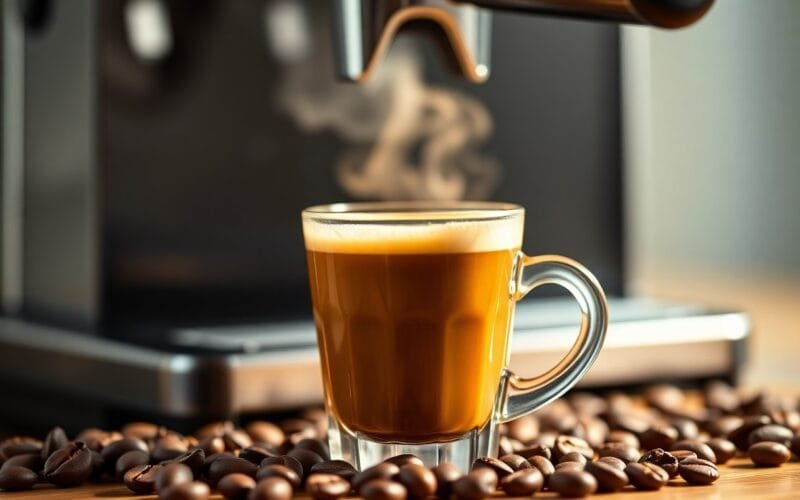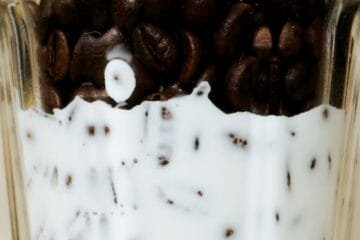You can unlock the full potential of your espresso by mastering a few simple techniques. Understanding grind size, coffee-to-water ratio, and extraction time can mean the difference between a bitter brew and a rich, balanced shot. By following expert advice, you’ll enjoy café-quality espresso from the comfort of your kitchen. Don’t overlook the importance of clean equipment, as even small amounts of residue can negatively affect the flavor. To dive deeper into espresso perfection, check out how researchers discover the secret to perfect espresso (hint).
Key Takeaways:
- Freshness is imperative; always use freshly roasted coffee beans for the best flavor.
- Pay attention to grind size, as it significantly affects extraction and the overall taste of your espresso.
- Water temperature and pressure are key; aim for around 200°F and 9 bars of pressure for optimal results.
The Essential Gear: Tools That Make the Difference
Your espresso journey hinges on having the right tools at your disposal. Investing in high-quality gear not only takes your brewing experience to the next level but also sets the stage for achieving that perfect shot of espresso. From machines designed for specific brewing techniques to grinders that unlock the full potential of coffee beans, having the crucials will ensure your efforts aren’t in vain. Having the tools of the trade makes all the difference in extracting rich flavors and aromas from your favorite coffee beans.
Coffee Machines: Espresso Options Explained
Espresso machines vary greatly, from manual lever types to fully automatic models. Each option offers a unique approach to brewing; for instance, a manual machine allows you precise control over pressure and extraction time, while a semi-automatic provides a balance of automation with user involvement. If convenience is your priority, a super-automatic machine will deliver consistent shots at the push of a button. Choose a machine that fits your style and preferences to achieve consistent espresso results.
Grinder Choice: The Key to Flavor Extraction
The grinder is often overlooked, yet it plays a vital role in flavor extraction. A high-quality burr grinder produces a consistent grind size, which is crucial for making excellent espresso. The grind size directly affects extraction; too coarse results in weak, under-extracted shots, while too fine leads to over-extraction and bitter flavors. Aim for a grind that’s similar to table salt to unlock your coffee’s best flavors.
Investing in a burr grinder is crucial; it offers more precision than a blade grinder, ensuring uniformity in your coffee grounds. This consistency is critical since espresso demands a specific particle size for optimal extraction. For example, when using darker roasts, a slightly coarser grind may help balance the rich flavors, while lighter roasts benefit from a finer grind to enhance their brighter notes. Understanding the relationship between grind size and flavor nuances empowers you to tailor each espresso shot to your taste preferences.
The Art of Coffee Selection: Beans Matter
Your choice of coffee beans sets the stage for a perfect espresso. Selecting high-quality beans tailored to your palate will enhance the overall experience, leading to rich flavors and aromatic nuances. Look for specialty coffees that are sourced from specific regions, as each origin imparts distinct characteristics that can elevate your cup. Exploring different varietals allows you to discover combinations you may not have initially considered, ultimately refining your espresso skills.
Understanding Roast Profiles: Light vs. Dark
The roast profile of your beans significantly influences the taste of your espresso. Light roasts preserve more of the bean’s natural flavors, resulting in bright acidity and floral notes, while dark roasts yield bolder, caramelized flavors with deeper body. Your taste preferences should guide your selection, but experimenting with both profiles can reveal new dimensions to your espresso experience, making each cup a unique adventure.
The Importance of Freshness: Why Date Matters
Using freshly roasted coffee beans is non-negotiable when crafting high-quality espresso. Beans begin to lose their flavor just weeks after roasting, making the roasting date necessary for ensuring optimal freshness and taste. Seek out roasters who provide roasting dates on their packages to ensure you’re working with the best possible beans.
Freshness shouldn’t be taken lightly; coffee beans start to oxidize immediately after roasting, leading to a decline in flavor and aroma. Within a few days, the brightness of light roasts will fade, and the complexity of dark roasts will soften. Ideally, aim to use beans within two to four weeks of roasting for the most vibrant flavor. Storing your beans in an airtight container away from light and heat can help maintain maximum freshness for longer. Prioritizing freshness is the key to transforming your espresso from good to exceptional.
The Science of Brewing: Perfecting Your Method
Understanding the brewing process allows you to fine-tune your espresso to reach that coveted balance of flavor and aroma. Experiment with variables like extraction time, grind size, and brew ratio to discover what works best for your personal taste. By mastering the science behind brewing, you’ll gain control over your espresso shots and get consistent results that reflect your preference.
Ideal Espresso Ratios: Coffee to Water Balance
The optimal coffee-to-water ratio typically hovers around 1:2, meaning for every gram of coffee, you should use around two grams of water. Adjusting this ratio can yield different flavors; more coffee leads to stronger, more intense shots, while increasing the water typically results in a lighter profile. Finding your perfect ratio can elevate your espresso technique and improve every cup.
Temperature Control: Hitting the Sweet Spot
Brewing temperature plays a significant role in extracting the flavors from your coffee beans. Ideal espresso brewing temperatures range between 195°F and 205°F. Lower temperatures may yield sour flavors, while higher temperatures can result in bitterness. Carefully controlling the water temperature ensuring it falls within this range is necessary for achieving a balanced espresso experience.
Brewing Temperature
| Temperature Range | Effect on Flavor |
| Below 195°F | Sour, under-extraction |
| 195°F – 205°F | Balanced and rich flavor |
| Above 205°F | Bittersweet, over-extraction |
At temperatures below 195°F, the coffee may not extract properly, leaving you with a thin and acidic shot. Conversely, brewing temperatures exceeding 205°F can lead to excessive bitterness. To master temperature control, use an accurate thermometer or a high-quality espresso machine with built-in temperature regulators. Regularly calibrating your equipment ensures that you consistently hit that sweet spot where the flavors harmonize beautifully.
Temperature Control Best Practices
| Tip | Description |
| Preheat Equipment | Ensure your espresso machine and cups are warmed up. |
| Monitor Brew Time | Use a timer to control extraction, aiming for 25-30 seconds. |
| Check Water Quality | Use filtered water to minimize unwanted flavors. |
Common Pitfalls: Avoiding Espresso Failures
Even seasoned coffee enthusiasts can stumble into common espresso-making traps that lead to disappointing results. Missteps in variables like grind size, brew time, and water quality can easily derail your efforts. Paying close attention to these factors can ensure that every shot you pull is as delicious as it should be. Let’s investigate into the critical elements that can make or break your espresso experience.
Grind Size and Brew Time: The Fine Line
The grind size directly influences brew time, and both must be balanced for optimal extraction. If your coffee is ground too coarsely, you won’t achieve the rich, bold flavors that espresso is known for, resulting in a watery brew. Conversely, a grind that’s too fine can lead to over-extraction, causing bitterness. Aim for a texture similar to granulated sugar and a brew time of about 25 to 30 seconds to achieve the best results.
Water Quality: The Overlooked Element
Many espresso enthusiasts underestimate the impact of water quality on their shots. Using tap water filled with chlorine and minerals can alter your espresso’s flavor profile, overshadowing the intended nuances of the beans. Ideally, you should opt for filtered or bottled water that is free from any strong tastes or odors to ensure pure extraction.
Water quality plays a surprising role in the overall coffee experience. Hard water can lead to mineral buildup in your machine, affecting both performance and taste over time. For optimal espresso, use water with a balanced mineral content—experts suggest aiming for a total dissolved solids (TDS) level of around 150-250 ppm. This balance not only enhances the flavor but also ensures your machine operates efficiently, prolonging its lifespan.
Taste Testing: Developing Your Palate
Taste testing your espresso is an crucial step in refining your skills and discovering your preferences. By training your palate, you can recognize subtle flavors and aromas, which will enhance your brewing technique and overall coffee experience. Engage in regular tastings, both with friends and independently, and take notes on what you enjoy most about each cup. This practice not only hones your ability to discern various flavor profiles, but also adds depth to your appreciation of this beloved beverage.
Identifying Flavor Notes: What to Look For
When tasting your espresso, focus on identifying distinct flavor notes that might include chocolate, fruit, nuttiness, or spice. Pay attention to aspects of acidity, sweetness, and bitterness, which create the overall balance. Sipping the espresso slowly allows you to experience the complexity hiding in each shot. With practice, you’ll soon find it easier to articulate what you enjoy and seek out similar beans or brewing methods to replicate those flavors.
Adjusting Techniques: A/B Testing Your Brews
A/B testing your brews can be a game changer in dialing in the perfect espresso. By changing just one variable at a time—like grind size, brewing temperature, or extraction time—you can see how it affects the flavor. Prepare two shots side by side with only slight differences, and then compare the results. This method allows you to pinpoint which adjustment enhances the taste while taking detailed notes to guide future experiments.
For example, if you suspect a finer grind might yield a more robust flavor, brew one shot with your usual grind size and another with the finer setting. Observe the differences in body and brightness. Continuing this process with variables such as water temperature or coffee-to-water ratio helps you understand which adjustments enhance your espresso, creating a personalized and satisfying brew. Each test serves as a stepping stone toward mastering your craft, allowing you to enjoy the journey and the evolving flavors of your espresso.
Conclusion
Considering all points, mastering the art of espresso is not just about the machine or beans; it’s about understanding the process and practicing simple techniques. With the tricks outlined, you can enhance your espresso-making skills and enjoy rich, flavorful results at home. Dive deeper into the nuances by exploring Bean to Cup: Unveiling the Secrets Behind the Perfect Espresso to further refine your technique and enjoy the perfect cup each time.
FAQ
Q: What type of coffee beans should I use for the best espresso?
A: To achieve a great espresso, it’s best to opt for freshly roasted coffee beans. Look for beans that are specifically labeled as espresso or a dark roast. These beans usually have a rich and bold flavor profile, which is ideal for espresso. Additionally, make sure to grind the beans just before brewing to preserve their freshness and aroma.
Q: How important is the espresso machine in making perfect espresso?
A: The espresso machine plays a significant role in the quality of your espresso. A good machine should be capable of reaching and maintaining the ideal brewing temperature of around 190-205°F (88-96°C). It’s also important to use appropriate pressure, ideally around 9 bars, during extraction. While a high-end machine can improve consistency and flavor, even a mid-range machine can yield excellent results if used correctly. Regular maintenance and cleaning of the machine can also enhance the quality of your espresso.
Q: What factors can affect the crema of my espresso and how can I improve it?
A: The crema, that golden frothy layer on top of your espresso, is influenced by several factors, including the quality of the coffee beans, grind size, and brewing pressure. To improve crema, ensure you’re using freshly roasted beans, as older beans may lose their oils and thus create less crema. A finer grind can help increase the extraction of oils, but be cautious not to grind too fine, as this can lead to over-extraction and bitterness. Additionally, a consistent tamping pressure when packing the espresso grounds into the portafilter can help achieve the right pressure during extraction, further enhancing the crema.




